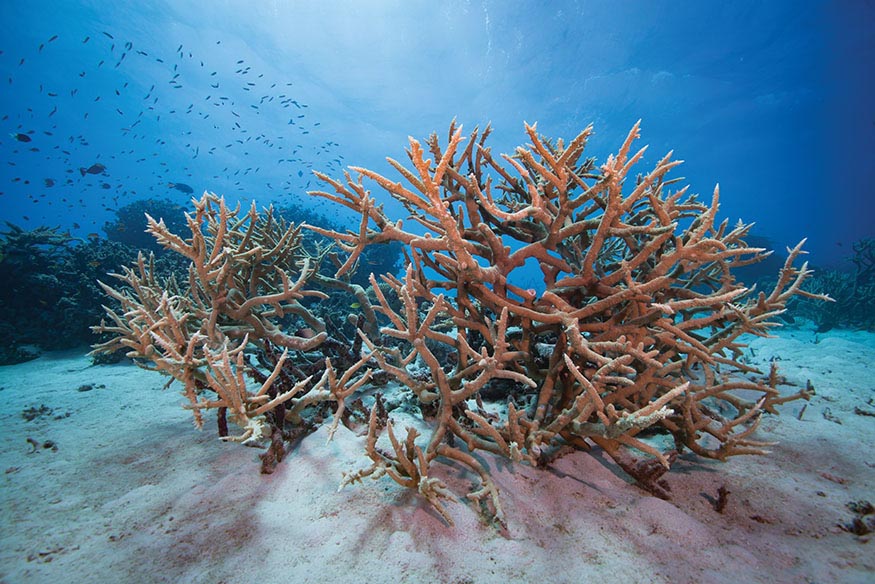
To understand Petoskey stone, you need to know about the animals that created it: corals. Both ancient and modern corals share a lot in common. What’s more, corals alive today can shed light on how ancient corals grew and lived, and studies of fossil corals have revealed evidence of past environmental collapses that may be relevant today.
Corals are ancient invertebrate animals, first appearing in the fossil record during the Cambrian Period, which began 542 million years ago. They are still alive today and are among the longest-living groups of animals on record. Both ancient and modern corals are small organisms that live in marine environments, usually in large, tightly compact colonies. Corals are best known for their ability to secrete external skeletons composed of calcium carbonate, a compound consisting of calcium, carbon, and oxygen. This means that the branching, bulbous, or fan-like shapes we know as “coral” actually consist of thousands to millions of individual organisms. These are coral colonies, which are housed in a collective coral skeleton.


Modern corals in a reef
Corals are a vital part of ocean ecosystems around the world because many coral species help build reefs, large stony masses that form after successive generations of coral growth.
Reefs are particularly important because corals thrive in waters that are low in nutrients. And while corals rely on ocean currents to carry prey to them, the reefs they form provide shelter and food sources for countless species of fish, mollusks, cephalopods, crustaceans, sponges, and many other kinds of animals. The resources that corals and reefs provide other ocean organisms are critical for seas to thrive. The species of coral in Petoskey stone, H. percarinata, played a similar role in the ancient oceans.

A healthy reef